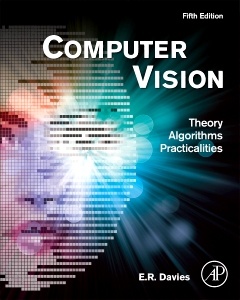Description
Computer Vision (5th Ed.)
Principles, Algorithms, Applications, Learning
Author: Davies E. R.
Language: English
Subject for Computer Vision:
Support: Print on demand
Description
/li>Contents
/li>Readership
/li>Biography
/li>Comment
/li>
Computer Vision: Principles, Algorithms, Applications, Learning (previously entitled Computer and Machine Vision) clearly and systematically presents the basic methodology of computer vision, covering the essential elements of the theory while emphasizing algorithmic and practical design constraints. This fully revised fifth edition has brought in more of the concepts and applications of computer vision, making it a very comprehensive and up-to-date text suitable for undergraduate and graduate students, researchers and R&D engineers working in this vibrant subject.
See an interview with the author explaining his approach to teaching and learning computer vision - http://scitechconnect.elsevier.com/computer-vision/
1. Vision, the Challenge2. Images and Imaging Operations3. Image Filtering and Morphology4. The Role of Thresholding5. Edge Detection6. Corner, Interest Point and Invariant Feature Detection7. Texture Analysis8. Binary Shape Analysis9. Boundary Pattern Analysis10. Line, Circle and Ellipse Detection11. The Generalised Hough Transform12. Object Segmentation and Shape Models13. Basic Classification Concepts14. Machine Learning: Probabilistic Methods15. Deep Learning Networks16. The Three-Dimensional World17. Tackling the Perspective n-point Problem18. Invariants and perspective19. Image transformations and camera calibration20. Motion21. Face Detection and Recognition: the Impact of Deep Learning22. Surveillance23. In-Vehicle Vision Systems24. Epilogue—Perspectives in VisionAppendix A:Robust statisticsAppendix B: The Sampling TheoremAppendix C: The representation of colourAppendix D: Sampling from distributions
Computer vision researchers; under graduates and post graduates in computer vision, machine learning, pattern recognition and Image processing.
- Three new chapters on Machine Learning emphasise the way the subject has been developing; Two chapters cover Basic Classification Concepts and Probabilistic Models; and the The third covers the principles of Deep Learning Networks and shows their impact on computer vision, reflected in a new chapter Face Detection and Recognition.
- A new chapter on Object Segmentation and Shape Models reflects the methodology of machine learning and gives practical demonstrations of its application.
- In-depth discussions have been included on geometric transformations, the EM algorithm, boosting, semantic segmentation, face frontalisation, RNNs and other key topics.
- Examples and applications—including the location of biscuits, foreign bodies, faces, eyes, road lanes, surveillance, vehicles and pedestrians—give the ‘ins and outs’ of developing real-world vision systems, showing the realities of practical implementation.
- Necessary mathematics and essential theory are made approachable by careful explanations and well-illustrated examples.
- The ‘recent developments’ sections included in each chapter aim to bring students and practitioners up to date with this fast-moving subject.
- Tailored programming examples—code, methods, illustrations, tasks, hints and solutions (mainly involving MATLAB and C++)




